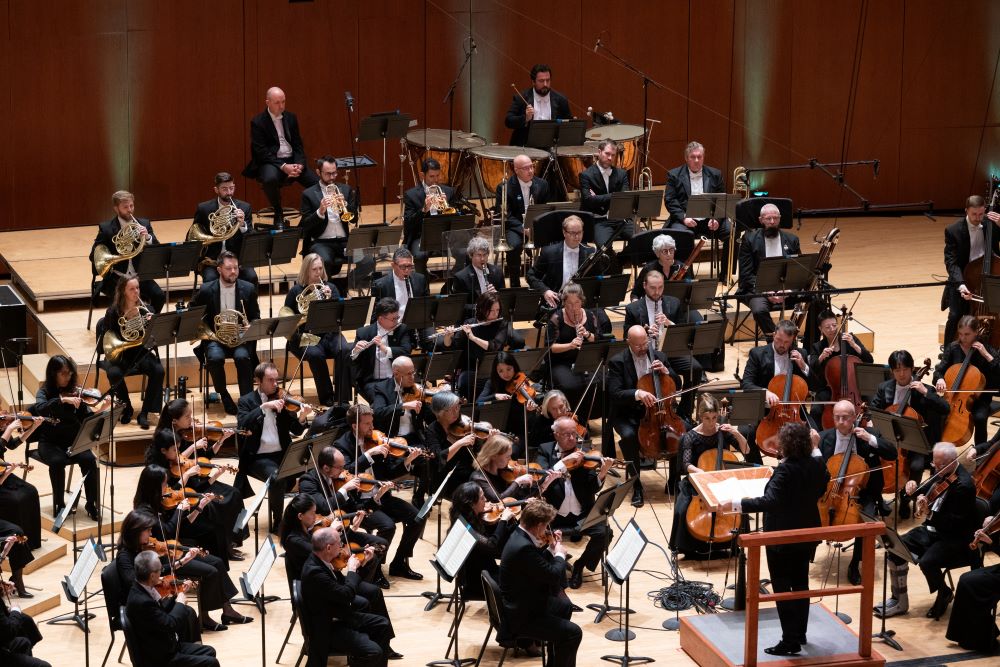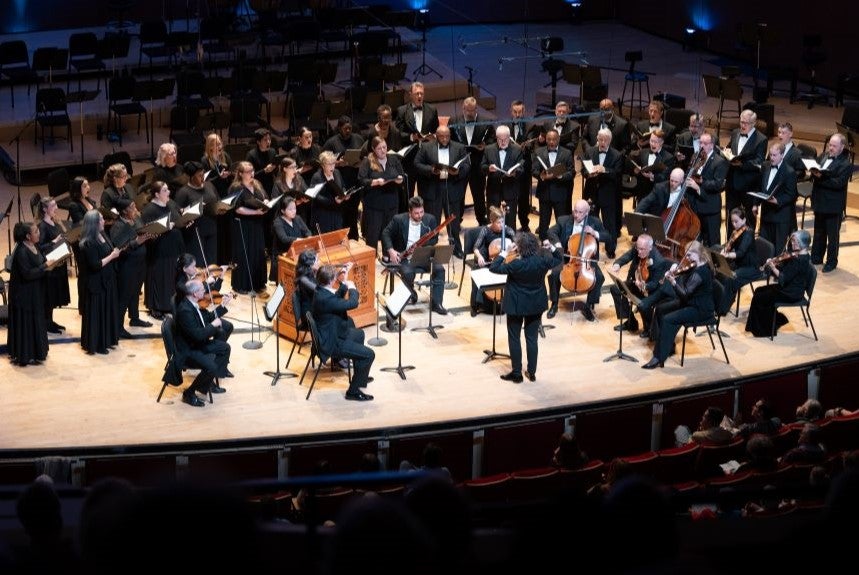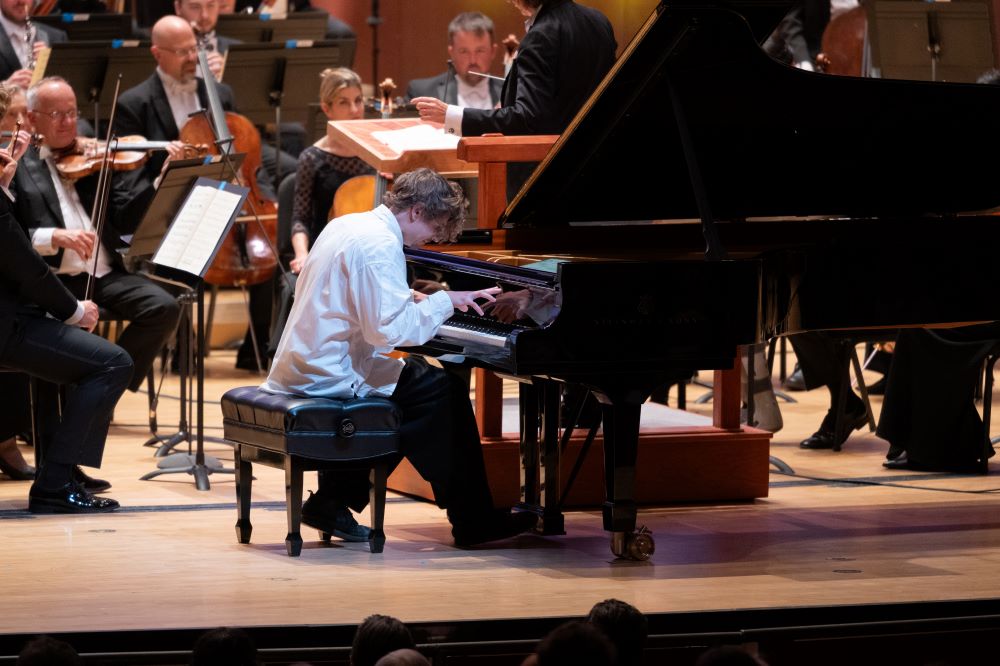Chamber chorus makes its season debut in Bach Cantata
Concert Reflections with Jon Ross
In this series from local music journalist Jon Ross, he reflects on the ASO’s Delta Classics Series with fresh insights into each concert.

Photos by Rand Lines
OCT 10 | For the latest Atlanta Symphony Orchestra debut, the ASO Chamber Chorus, focused to about half its normal size, stood in a semicircle at the backs of a similarly compressed orchestra. Music director Nathalie Stutzmann led the intimate ensemble by leaning in close, directing flowing, interlocking melodies with dancing fingers.
That’s how Atlantans first heard the ASO perform J.S. Bach’s “Cantata 150,” which the composer likely wrote around 1707. Greatness is worth the wait.
On Thursday, Stutzmann bookended her second program of the season, which was the first to feature members of the ASO Chorus, with the cantata and Johannes Brahms’ fourth symphony. Brahms famously used the Bach work as inspiration for his symphony’s final movement. In between, the ASO played Edvard Grieg’s piano concerto, performed with panache by guest artist Pavel Kolesnikov. The program repeats on Friday night.

A short piece of sacred music, the Bach cantata is much more than an opening course; it’s a nourishing work that can easily stand alone in a program. Thursday, it worked as a setup for the rest of the evening, with the reduced chorus functioning as a tight, vibrant ensemble. The chorus is usually spread out across risers at the back of the stage, which can make for a sound that feels distant. It was a treat to hear them close up, working as one with the smaller orchestra. Instead of guest soloists, longtime singers emerged from that group. It was a rare delight to see soprano Wanda Yang Temko, alto Ana Baida, tenor Justin Cornelius and bass William Borland in the spotlight. (The full chorus is on display for Beethoven’s ninth symphony in November.)
There are moments of pure beauty throughout the Bach, but Thursday, “Leite mich in deiner Wahrheit” struck me as exceptionally powerful. In the movement, a scale ascends through each of the four voices, from bass to soprano, providing upward lift to the slow, sorrowful music. This introspective passage soon blossoms, after eight bars, into energetic melisma. The orchestra and chorus performed these switches – the piece goes back and forth, back and forth – with precision.
The opening passage of Grieg’s piano concerto has pervaded popular culture. It’s a passage you may feel you’ve heard time and time again outside of the concert hall, but might not be able to place. Kolesnikov’s first notes at the piano rang out as glassy chords waterfalling down the keyboard, a churning, turbulent setup before the woodwinds cautiously emerged. The orchestra showed attentive grace, swelling gloriously to prop up a thundering piano passage and falling down to a whisper as Kolesnikov’s notes developed an indescribable sweetness and clarity in quiet passages.

After the first half, Brahms’ fourth symphony brought focus solely to the orchestra, showing how truly in tune the musicians are with their music director. Stutzmann and the musicians have worked hard in past seasons to build a solid foundation, a mutual trust that has, so far in this new season, enabled them to create memorable concerts.
But the evening, full of great music, brought up a few questions: What do critics listen for in a performance? Technical mastery is great, as is precision. But the expert execution of particular musical passages is not as critical as the shape of the entire concert. Do the musicians create an undeniable emotional connection with the music? Are they simply playing the notes or embodying and feeling the music they perform? These are heady questions, and it’s great to hear that so far this season, the ASO is performing with an intimate attachment to their music. These first two concerts of the season have felt special. That bodes well for the rest of the season.